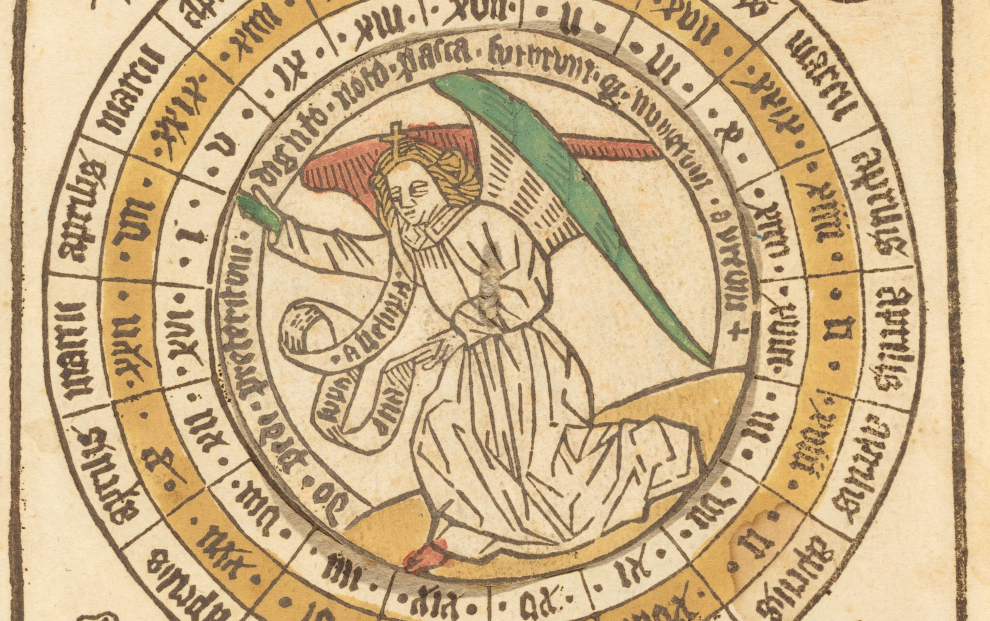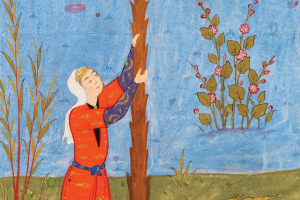The calendar for this jubilee year is pretty straightforward. In February, for example, we celebrate the armed forces, police, and security personnel (Feb. 8–9), artists (16–18), and deacons (21–23). Those who can’t get to Rome might be blessed in their local parish.
The church calendar, by contrast, is a mystery to many Catholics. Some of it is simple: If it’s Sunday, go to Mass. Some of it is more complicated: Easter Sunday is a moveable feast. It’s set on the first Sunday after the first full moon after the vernal equinox (seriously), so it can occur anytime from March 22 to April 25. This means Lent starts sometime in February or March. No wonder some of us don’t realize it’s Ash Wednesday until marked heads show up on the streets.
Along with Sundays (fixed) and seasons (moveable), the church calendar observes other events: solemnities, feasts, memorials, and optional memorials. You can tell from these categories that some are more diligently observed, in descending order. There are 17 solemnities, six of which occur on Sundays: Epiphany, Easter, Pentecost, Trinity Sunday, Body and Blood of Christ (AKA Corpus Christi), and Christ the King. Ascension Thursday is now Ascension Sunday for folks who live elsewhere than the ecclesial provinces of Boston, Hartford, New York, Philadelphia, and Omaha.
Of the other solemnities, only six are holy days of obligation. These include Immaculate Conception (December 8), Christmas (you got this one!), Mary Mother of God (January 1), Ascension (moveable in the five provinces listed above), Assumption (August 15), and All Saints Day (November 1).
I always feel a little sad for solemnities that aren’t obligatory. Why not celebrate St. Joseph, spouse of Mary (March 19); the Annunciation, so gloriously rendered in religious art history (March 25); the Nativity of John the Baptist, because who doesn’t love another reason for birthday cake (June 24); the Sacred Heart of Jesus, a picture everyone’s grandmother has on the wall (June 27); and powerbroker saints Peter and Paul, without whom we don’t have the papacy or a big chunk of the New Testament (June 29)? Of course, if these solemnities were obligatory, we’d spend the whole last week of June in church.
Feasts are the second rank of observances. We currently have 26 of these, but as Mary Magdalene’s former memorial was elevated to a feast in 2020, we’re forewarned that liturgical categories are subject to change. (Bishops’ conferences determine the calendar, so while feasts may be on the same date in every country, their level of importance varies.)
Feasts honor special people, places, or things: Our Lady of Guadalupe, the chair of Peter, the exaltation of the cross, dedication of the Lateran Basilica. Apostles and evangelists all have feasts. When feasts occur during Ordinary Time, some actually abrogate (replace) the Sunday observance. Which is why you show up for the nth Sunday in Ordinary Time and—surprise! It’s really the Presentation of the Lord, as happens this month.
Memorials, the third category of immoveable feasts, mostly honor saints and martyrs. With more than 10,000 canonized saints to choose from, fewer than 100 appear on our national calendar presently, with more than 100 additional optional memorials. Church father Irenaeus was recently bumped up from an optional memorial to a guaranteed one, so view this group as routinely in flux.
I can’t say why five of our U.S. saints get memorial status—Elizabeth Seton, John Neuman, Frances Cabrini, Kateri Tekakwitha, and the Jesuit martyrs—while five others are only optionally observed—Marianne Cope, Katharine Drexel, Damien de Veuster, Junipero Serra, and Rose Philippine Duchesne. Why does one of our Blesseds, Francis Xavier Seelos, gain an optional observance but equally Blessed Solanus Casey, Stanley Rother, and Teresa Demjanovich get nada zilch zero on these calendars? There are mysteries even church professionals can’t explain.
But let’s return to the Feast of the Presentation of the Lord, which falls on a Sunday this February. It supersedes what would have been the Fourth Sunday in Ordinary Time. Presentation can seem an oddball observance, more Jewish than Christian, as it honors Jesus’ post-circumcision welcome into the Jewish assembly as well as his mother’s purification from contact with blood in giving birth. Two things for which we don’t have rituals in the church today.
Exodus describes the consecration of firstborns to God, both humans and animals. In ancient terms, this implied ritually sacrificing these lives to the deity. However, since Israelites abhorred human sacrifice—recall Abraham was stopped by an angel before sacrificing his son Isaac—Leviticus explains how the child’s life can be redeemed (“bought back”) by animal substitution.
Most parents presented a year-old lamb with their child at the Temple, plus a turtledove or pigeon for the mother’s purification. In return, they took the child home with them. Economically strapped parents were permitted to bring two of the fairly worthless birds instead, one each for child and mother. The holy family brought birds, betraying their humble situation.
In the census-happy Book of Numbers, a lot of accounting goes into figuring out who survived the desert trek to the Promised Land and how much land each tribe should receive there, based on the math. Moses decrees the priestly tribe of Levi to be a symbolic tithe for all Israelites: Since the Levites belong to the Lord in a special way, they ritually redeem the rest of the nation. Just to make sure the divine debt is covered, though, each firstborn Israelite is also financially redeemed at the price of five shekels. The amount reflects the price paid for Jacob’s son Joseph when he was sold into slavery by his brothers.
Practically speaking, this literal buy-back of the nation in hard cash on the banks of the Jordan was probably easier than butchering whole flocks of lambs or capturing many, many, many birds on a single day. The other pragmatic aspect of this religious tax is this: As the priestly Levites don’t get any land in Canaan, the redemption stipend jumpstarts their livelihood. Levites will continue to circulate landless in Israel, performing rituals of worship for their upkeep.
The holy family isn’t recorded as forking over shekels when they present Jesus in the Temple. They do bring the birds but, significantly, the ritual itself becomes irrelevant to Luke’s account. What Luke is most interested in telling us is that the presence of Jesus is noted by two holy people, Simeon and Anna. Simeon means “God has heard” and Anna means “grace.” These two are quick to announce that Israel’s redemption has arrived.
Simeon perceives this child to be the light of revelation to all nations, not just for Jews. This child will be a sword of discrimination to lay bare every heart. We celebrate the Presentation of Jesus not for why Mary and Joseph went to the Temple to begin with but for what happened when they got there. As Karl Barth declared, Jesus was a crash from above, and the church is the crater of universal impact Jesus left on the world. That impact should be visible in us.
This article also appears in the February 2025 issue of U.S. Catholic (Vol. 90, No. 2, pages 47-49). Click here to subscribe to the magazine.
Image: Wikimedia Commons












Add comment